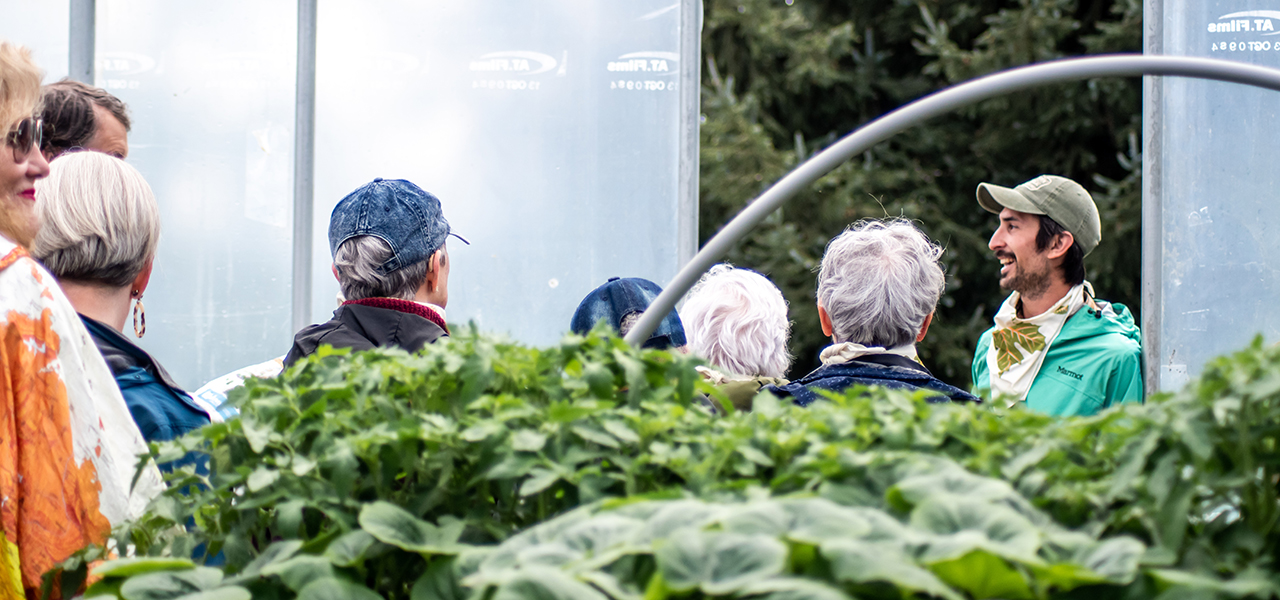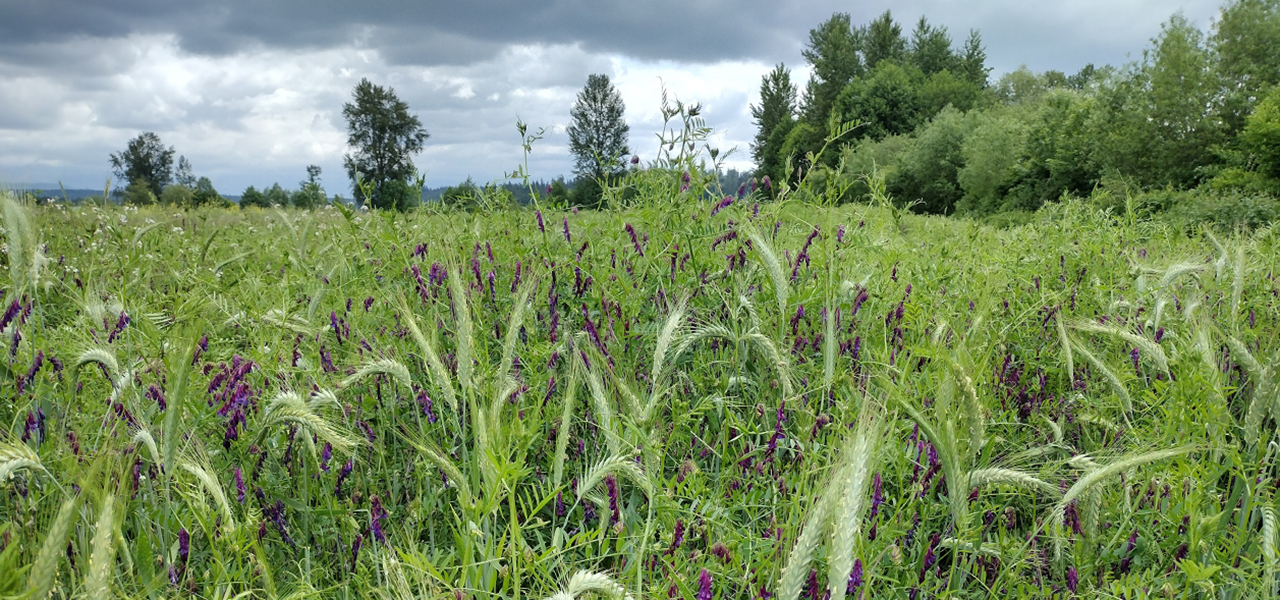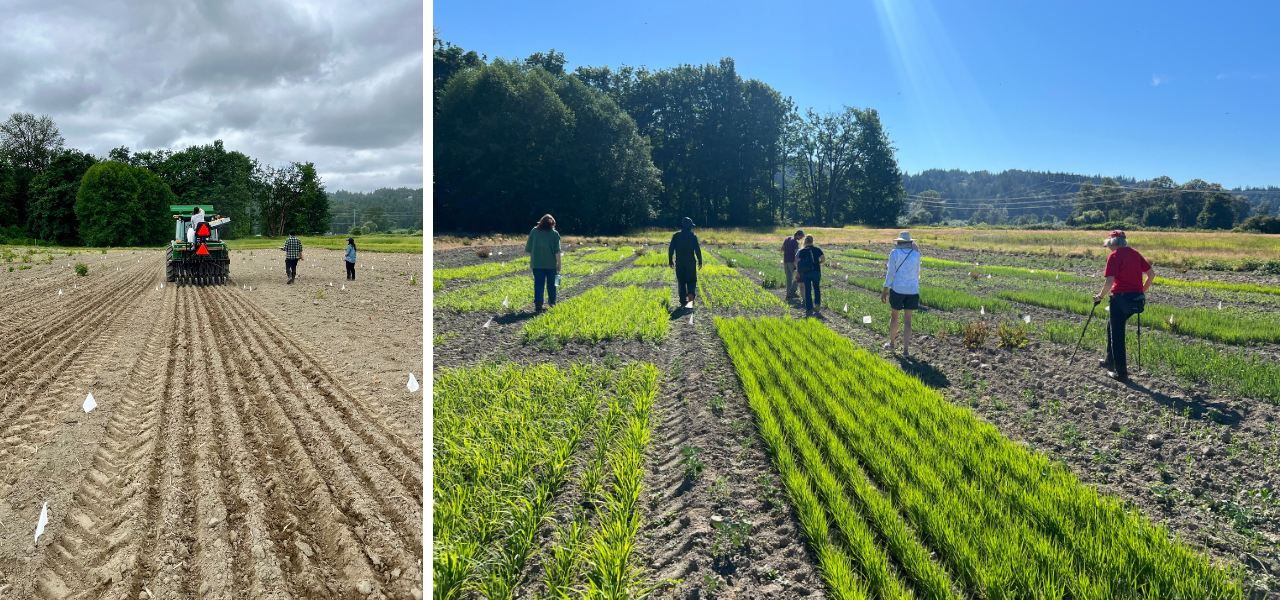Cultivating Hope: Cover Cropping for Sustainable Agriculture
Life is an exciting journey, full of surprises and changes. Sometimes, with an overload of information at our fingertips, it’s easy to feel disconnected and overwhelmed. But today, we’re here to brighten your day by sharing some exciting things happening at Oxbow that give us hope and energy about the future of our Earth and how we are playing a role in combating climate change.
At Oxbow we are lucky to be surrounded by a range of enthusiastic folks with immense knowledge and experience in their fields. We recently had the pleasure of diving into cover crops with Oxbow’s Agriculture Program Manager, Anthony Reyes.

Anthony is earnestly committed to sustainable agriculture and food justice, embodying a deep wealth of wisdom hard-earned over more than a decade of trial and error in farm fields throughout Washington and California. His passion for cover cropping is contagious, and his commitment to nurturing soil health is inspiring. His excitement, often labeled as “nerdy,” is a breath of fresh air as he delves into the intricacies of biomass, lignin content, and the wonders of cover crops like triticale. Since joining Oxbow in 2022, Anthony has been a driving force in cultivating our 30 acres (about 22 football fields) of farmland, focusing on sustainable and regenerative practices. In 2024, our Agriculture Team plans to allocate 80% of our fields to various cover crop mixes, allowing the soil to recover and thrive.
Farmer Anthony is particularly excited about one acre—the site of our old pumpkin patch. Traditionally, each “Oxtober,” Oxbow warmly welcomed visitors to this field for fall pumpkin-picking festivities. However, years of monoculture have impacted soil health, resulting in nutrient depletion and pest and disease buildup. But, in partnership with the Natural Resources Conservation Services (NRCS), this area has recently transformed into an experimental cover crop field. The goal is to revitalize our land and gather seed variety data that will guide other growers in making informed crop selections.
Before we get too far into it let’s lay the groundwork and share what cover cropping is for those unfamiliar. It is a farming practice where certain plants, other than traditional food crops, are grown primarily to benefit the soil. These plants can help support a more self-regulating ecosystem free of external inputs such as fertilizers, herbicides, and pesticides.
Cover crops are strategically chosen for their ability to improve soil health by contributing organic matter, preventing erosion, suppressing weeds, or enhancing overall fertility. Farmers use cover crops between seasons when the leading “cash crop” is not growing. There are several factors that farmers consider when planning what, when, and where to grow cover crops—from maturity timing to nutrient needs. These considerations are made more complex and unpredictable by climate change.

Now that we have that we’re all up to speed on cover crops and their purpose it’s time to dig into Oxbow’s exciting experimental work through the partnership that Anthony has helped establish.
The NRCS Plant Materials Center has been conducting various cover crop performance and adaptation trials across the United States, helping provide scientifically sound plant information so farmers can maximize yields. The experiment at Oxbow is particularly focused on testing crops usually grown on the more arid east side of the Cascades. The goal is to adapt these crops to the western Cascades, preparing for climate projections that suggest longer droughts and intense precipitation in the coming years.
Our experimental acre, divided into 100 plots, features a variety of millet, oats, sorghum, soybeans, and triticale. Over the next few years, we’ll monitor each variety’s performance, collecting data on density, maturity timing, weed suppression, and biomass production. This data will contribute to a digital tool for selecting cover crops, empowering growers to make informed decisions tailored to their needs and plant hardiness zones.
We are hopeful that gleaning this knowledge will allow us and other producers in the area make more informed decisions for years to come. We are eager to share the emerging discoveries and how they benefit us all, from better agricultural practices to our tables.

Stay tuned for experiment updates by subscribing to our newsletter and become a Farm Shareholder (CSA) to support innovative, sustainable agriculture and taste the delicious bounty of healthy soil this 2024, spots are still available! Let’s get our biomass into gear and cultivate a sustainable future for all.
